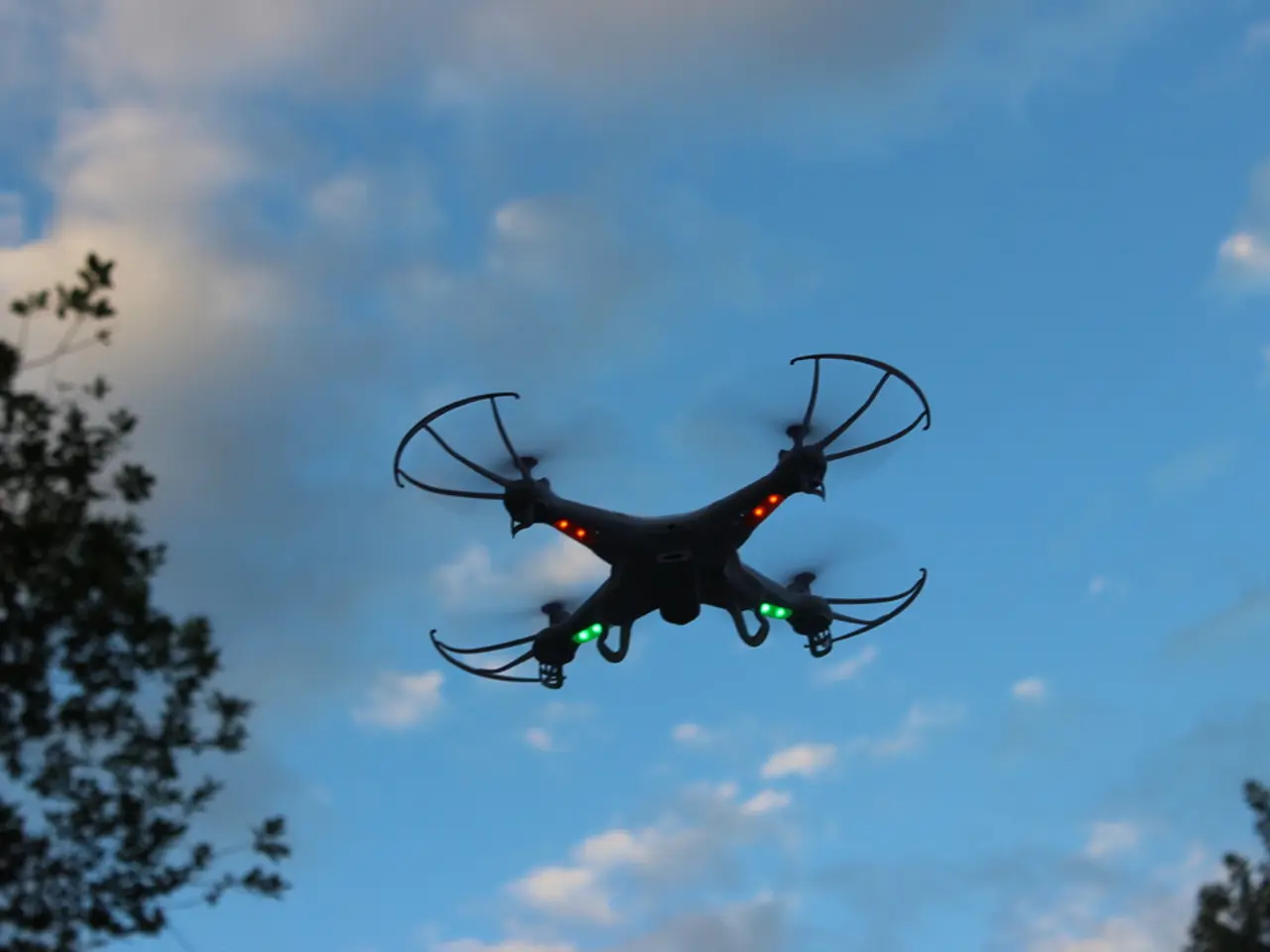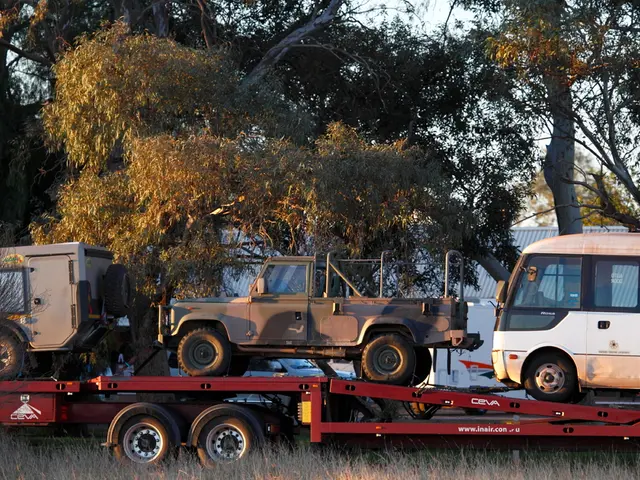Unmanned Aerial Vehicles Tracking Me: Six Concerning Explanations and Actions to Take
In the bustling city of New York, police departments have seen a significant increase in the registration of drones, with a 65% jump recorded by 2024 [1]. While drones can serve various purposes, from hobbyist pursuits to commercial and professional use, they also pose potential privacy risks, especially when they follow individuals.
If you find yourself being shadowed by a drone, the first step is to stay calm and aware. Common drones use GPS tracking from your smartphone or visual tracking to follow you [2]. Signs that a drone might be following you include it maintaining a close and consistent distance, changing direction in sync with your movements, or persistently hovering nearby beyond normal casual flying.
To identify a drone, listen for its distinct buzzing sound and observe its erratic movement patterns. If you suspect a drone is following you, note the exact time, place, and how it's flying. Afterward, try to locate the pilot or call local authorities and the FAA at 844-359-6982 [3].
While advanced detection methods are typically used by security teams, non-experts can rely on observation and apps that can detect RF signals or Remote ID broadcasts [1][3]. The DroneWatcher app, for instance, can help pick up radio signals drones regularly emit.
To protect your privacy, consider the following steps:
- Stay aware of local drone regulations: Ensure drones flying nearby comply with laws like Remote ID requirements, which broadcast drone ID and pilot location for transparency [1].
- Move indoors or into covered areas: Physical barriers can block drone cameras and signals.
- Document the drone activity: Record the drone visually or use apps that can scan for drone signals to collect evidence.
- Report suspicious drone activity: Contact local authorities or relevant agencies if a drone is persistently intruding on your privacy or property.
- Move toward an open, public area with plenty of people around if you start feeling unsafe.
Remember, technical countermeasures like RF jammers or disrupting drone control signals are generally illegal or impractical and can cause safety or legal issues [5].
As drone technology continues to evolve, so do privacy concerns. Modern drones can collect biometric data, even scanning faces to identify individuals in large crowds. The California Consumer Privacy Act demands that drone users follow certain data-collection rules, but many operators ignore the law [4].
In some states, flying drones over someone's property without approval can lead to misdemeanor charges, but catching offenders and enforcing the law isn't always easy. Keep track of drone incidents to make it easier for authorities to spot a clear pattern and take your complaint seriously.
The rising incidents of drone harassment, such as the case of Kim who was spied on by her ex-husband during a New Year's Eve party, highlight the need for increased awareness and action [6]. To protect yourself from unwanted drone surveillance, understand your privacy rights under local laws and take clear photos or videos of any suspicious drone activity.
As drones become more integrated into our daily lives, it's crucial to navigate this new frontier with caution and knowledge. By staying informed and vigilant, we can ensure our privacy rights are respected in this increasingly connected world.
[1] https://www.faa.gov/uas/resources/remote-id-implementation/ [2] https://www.cnet.com/tech/services-and-software/drones/how-to-stop-a-drone-from-following-you-or-invading-your-privacy/ [3] https://www.faa.gov/uas/getting-started/register-and-fly/uas_faqs/ [4] https://www.privacyrights.org/privacy-topics/drones [5] https://www.cnet.com/tech/services-and-software/drones/how-to-stop-a-drone-from-following-you-or-invading-your-privacy/ [6] https://www.cnet.com/news/drone-spying-on-woman-during-new-years-eve-party-sparks-call-for-new-laws/
To protect yourself from a potentially following drone, stay calm and aware. If you suspect a drone is following you, listen for its distinct buzzing sound and observe its erratic movement patterns. If you confirm the presence of a drone, note the exact time, place, and how it's flying, then try to locate the pilot or call local authorities and the FAA at 844-359-6982. Additionally, consider understanding your local drone regulations to ensure compliance and prioritize your privacy.




